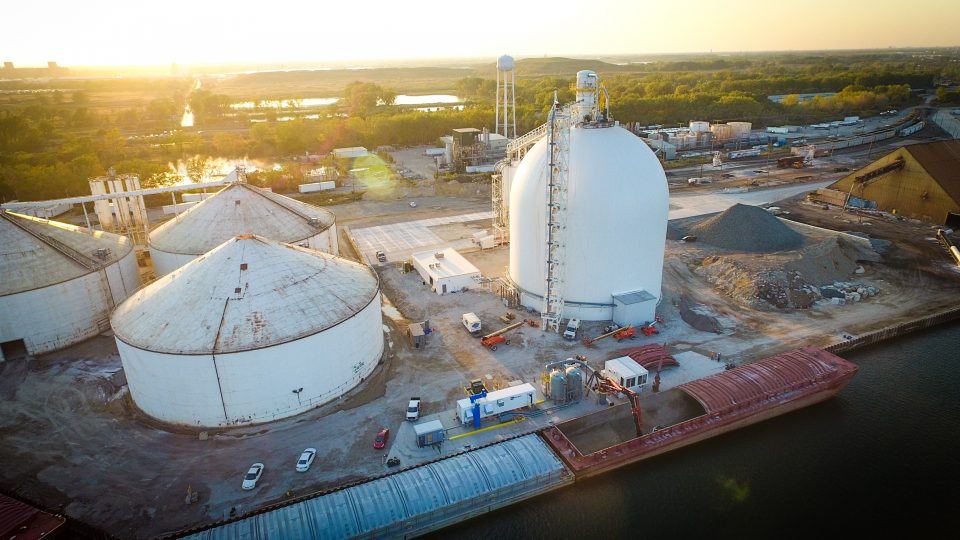A reinforced-concrete storage dome is a natural choice for companies eager to minimize their environmental impact by utilizing green storage. Dome Technology customers in a variety of bulk industries are realizing the benefits of sealed dome storage that lasts indefinitely and is designed to withstand natural disaster and even deflagration.
A sealed envelope
Sealed and seamless, a dome keeps product inside and prevents interaction with the environment. This envelope is multi-layered; a dome is built using the shotcrete method, so concrete is sprayed in place without any construction joints. On the exterior, a high-strength PVC membrane covers the entire structure. Between the membrane and the concrete, urethane foam protects the life of the structure as well as the stored product.
The PVC membrane ensures complete waterproof protection for the reinforced concrete shell and, consequently, the material stored within. A mold-resistant UV-protective resin coats both sides of the membrane, providing long-term protection from these two common sources of degradation. No other silo or bulk-storage system offers this type of waterproof protection, and this exterior requires almost zero superficial maintenance.
An increasing number of grain producers are contracting with Dome Technology to build domes that provide product protection. A dome “is proven to be an economical and reliable solution for long-term grain storage. It’s a sealed vessel that protects against rodents, bugs and moisture,” said Dome Technology CEO Bradley Bateman.
Additional advantages apply to coal companies. The double curvature of a dome provides strength at all points of the structure, even near the apex. With strength at the top, a coal company has no problem securing adequate space for dust-collection systems that thwart particulates trying to escape.
For those in the fertilizer industry, concrete can develop hairline cracks that can be penetrated by fine dust. These concerns are mitigated by spraying a polyurea coating on the interior surface of the dome. A corrosive-resistant powder can also be mixed into the concrete when placing the floor concrete.
Domes are always built without rivets, fasteners or mechanical connections found in other storage, thus eliminating potential sources for leaks and rust. This comprehensive approach to waterproofing promises long-lasting protection for stored product and the structure itself.

Robust and long lasting
Domes have an unlimited lifespan, which prevents teardown and minimizes material headed for the landfill. Measures designed to protect a dome’s structural integrity are essential to its longevity.
The structure itself can survive a disaster other types of storage might not and will likely reward customers with insurance-premium savings. A dome has inherent strength other bulk-storage structures do not. Should an earthquake, tsunami or tornado occur, the structure has a better chance of survival than a traditional building, and the stored product inside will not be introduced into the environment.
Dust is a concern with many stored products, but it simply can’t escape a monolithic dome since joints or seams don’t exist. Inside, the truss-free interior discourages dust build up, and
a host of dust-control systems exist in the marketplace to manage dust production. Automatic dust-collection systems can be designed to convey dust back into the product stream.
